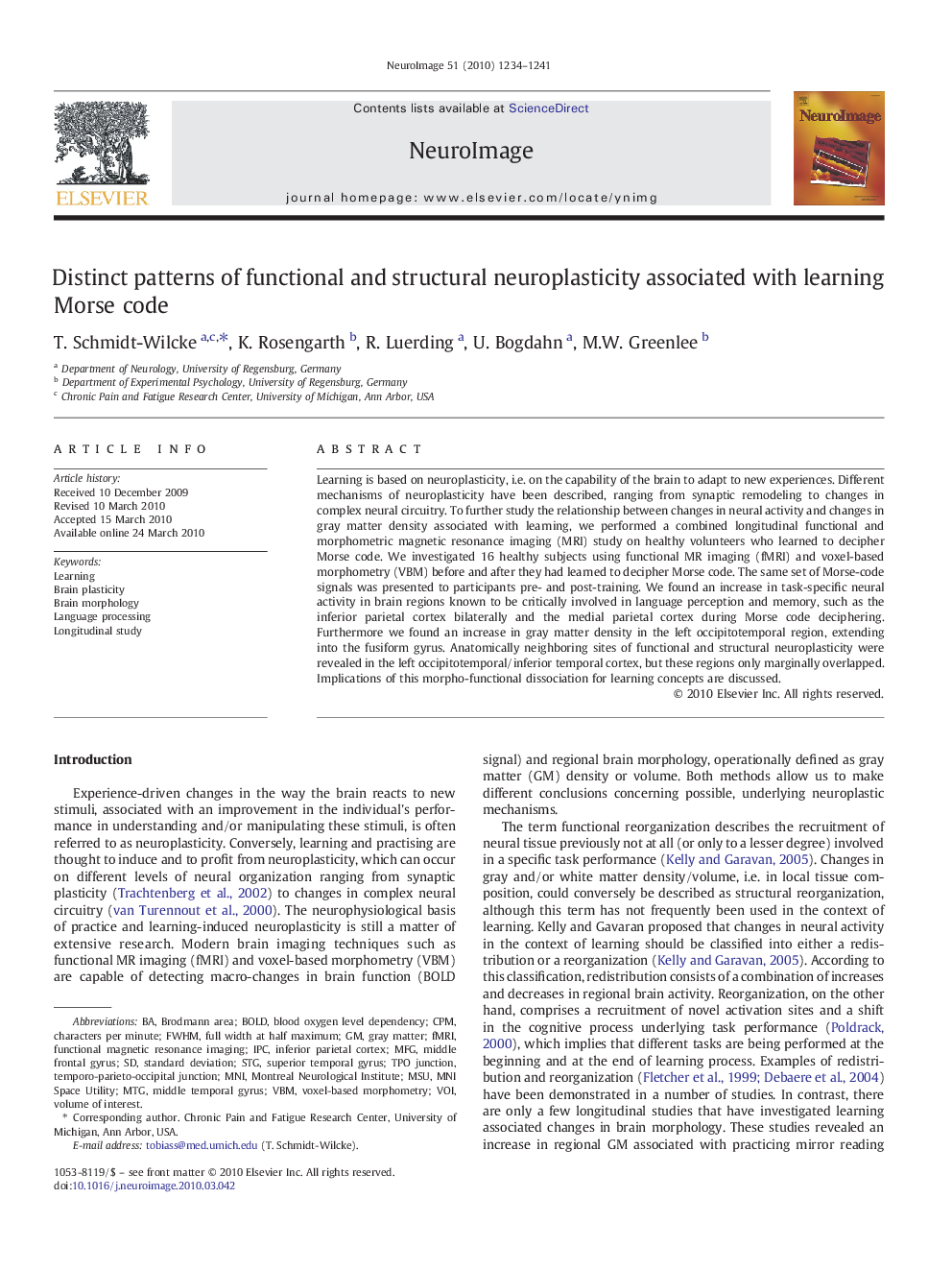| Article ID | Journal | Published Year | Pages | File Type |
|---|---|---|---|---|
| 6035592 | NeuroImage | 2010 | 8 Pages |
Abstract
Learning is based on neuroplasticity, i.e. on the capability of the brain to adapt to new experiences. Different mechanisms of neuroplasticity have been described, ranging from synaptic remodeling to changes in complex neural circuitry. To further study the relationship between changes in neural activity and changes in gray matter density associated with learning, we performed a combined longitudinal functional and morphometric magnetic resonance imaging (MRI) study on healthy volunteers who learned to decipher Morse code. We investigated 16 healthy subjects using functional MR imaging (fMRI) and voxel-based morphometry (VBM) before and after they had learned to decipher Morse code. The same set of Morse-code signals was presented to participants pre- and post-training. We found an increase in task-specific neural activity in brain regions known to be critically involved in language perception and memory, such as the inferior parietal cortex bilaterally and the medial parietal cortex during Morse code deciphering. Furthermore we found an increase in gray matter density in the left occipitotemporal region, extending into the fusiform gyrus. Anatomically neighboring sites of functional and structural neuroplasticity were revealed in the left occipitotemporal/inferior temporal cortex, but these regions only marginally overlapped. Implications of this morpho-functional dissociation for learning concepts are discussed.
Keywords
VBMIPCMFGMNIMSUFWHMBOLDStgMTGCPMVOIstandard deviationBrain plasticityLongitudinal studyfMRIfunctional magnetic resonance imagingsuperior temporal gyrusvolume of interestfull width at half maximumInferior parietal cortexGray matterBrodmann areaBrain morphologyvoxel-based morphometryMontreal Neurological InstituteLanguage processingmiddle temporal gyrusmiddle frontal gyrusLearning
Related Topics
Life Sciences
Neuroscience
Cognitive Neuroscience
Authors
T. Schmidt-Wilcke, K. Rosengarth, R. Luerding, U. Bogdahn, M.W. Greenlee,
